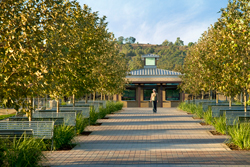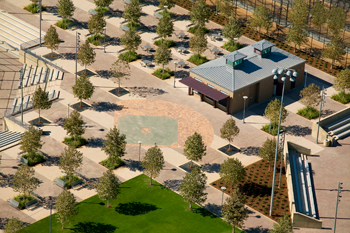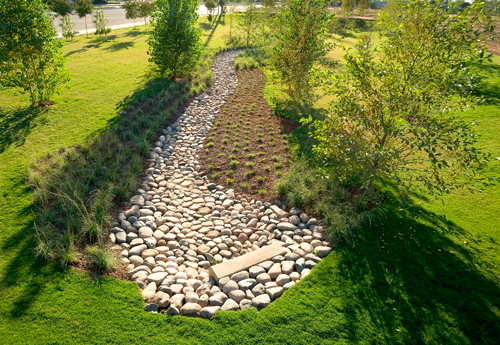Water is the New Oil: Part 2
By Guest Blogger Chris Coppersmith, LEED AP
Through the generosity of the American Society of Plumbing Engineers (ASPE), I was able to attend a conference last month, where we discussed the current and future state of the world's fresh water supply and the actions necessary to rectify the crisis. In Water is the New Oil: Part 1, I discussed the major problems concerning our water supply, and delved further into the relationship between water and energy. As promised, today's post will address education and conservation. The good news is there is plenty of water for everyone. We just need to be more aware of its worth and be smarter about its use.
Our community is in the unique position of having the opportunity to educate and raise awareness of critical, water-related issues with public officials, private development, supplying manufacturers, and the general public. Plus, we get paid for doing so!
Water saving devices are very familiar to us, but will not suffice to resolve the crises. The development of innovative technologies must be encouraged through implementation. Recycled and treated wastewater is becoming cheaper and more readily available as municipalities upgrade their aging supply infrastructures. Rainwater harvesting technologies are available and currently in use. The education of public officials can create allies, instead of road blocks, in efforts to reuse this water for non-potable applications. The public can be made aware of the financial incentives of an economical source of water, for non-consumption uses, that they would otherwise have to fund disposal of. Contractors will obviously benefit from the new infrastructure construction and upgrades and retrofits to existing systems. The manufacturing industry would need to increase employment levels to take advantage of the profits that the research, development, and supply of innovative technologies will yield. Engineering and design professionals will have an influential and responsible role in the design, application, and specification of new products and innovative applications.
Innovative technologies are not limited to the supply side of the water crises issue; waste water disposal requires attention as well. Grey water separation enables re-use, either on site by the owner or off site for treatment and resale by the local utility. Storm drain flow can be intercepted by green roofs or bioswales, and be safely  reintroduced back into the water cycle or stored and treated for non-potable uses. The re-use of this renewable resource protects the environment and incoming water supply from its concentrated discharge, and saves the cost of its treatment and discharge.
reintroduced back into the water cycle or stored and treated for non-potable uses. The re-use of this renewable resource protects the environment and incoming water supply from its concentrated discharge, and saves the cost of its treatment and discharge.
Government will prosper as bureaucracy must be increased to legislate, regulate, administrate, and insure that their due revenue enhancements are tallied and received for all of this new commerce and profit. Right?
 Education is paramount to the success of this effort.
Education is paramount to the success of this effort.
CONSERVATION
While new technologies are gaining ground, there is much that can be achieved with water conservation. Beyond the use of the water saving fixtures and devices that are familiar to us, lifestyle modification is required to make water conservation successful. Here in Southern California we live under the delusion that we reside in a lush rain forest, where water flows upon demand in unlimited quantities from our taps to meet our needs and irrigate our non-native gardens.
The average family can lower their water footprint and associated utility expenses 30 to 40 percent by simply considering consumption when purchasing fixtures and appliances, retrofitting existing plumbing fixtures with water saving devices, limiting time spent in the shower, washing full loads, limiting or eliminating non-potable uses such as hardscape washdown, and practicing responsible landscaping and irrigation.
As energy and water supplies are symbiotic, energy conservation will reduce the water supply needed for hydrology and free its use for other purposes. This has the added benefit of reducing conflicts over the rights to its flow, and the efforts wasted in resolving those conflicts through litigation at home or internationally.
Unfortunately, time is not on our side. As the Earth's population and unequal distribution grow, the efforts required for remediation increase exponentially. This issue requires actions that are timely, conscientious, and provide the opportunity for profits. I am convinced that we possess the skill, knowledge, and proactive nature to meet the challenge and solve this problem. I look forward to seeing the progress we will make, as an industry, in 2010.
LINKS
http://www.businessweek.com/magazine/content/08_25/b4089040017753.htm
http://seekingalpha.com/article/17769-water-is-the-new-oil
http://www.huffingtonpost.com/steven-solomon/water-is-the-new-oil_b_380803.html
